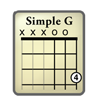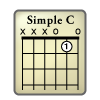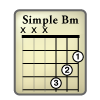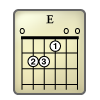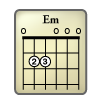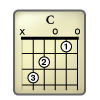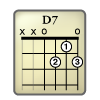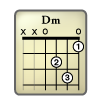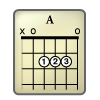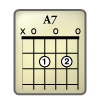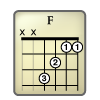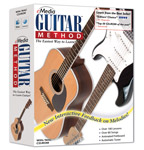Learning how to read guitar chords is one of the first things you need to know when learning how to play guitar. This free guitar lesson will teach you how to read guitar chords (also called guitar chord diagrams), so you can learn any guitar chord.
Guitar chord dictionaries, such as the one in the eMedia Guitar Toolkit (which features over 250 chords, a digital tuner and a metronome for just $4.95), help you learn everything from basic guitar chords for beginners to more advanced chords, including jazz and barre chords.
The Basics of How to Read Guitar Chord Charts
Guitar Finger Numbers
Guitar notation and chord diagrams rely on a system which assigns guitar finger numbers to each finger of a guitarist’s left hand.
Guitar String Numbers
Guitar strings are numbered from 1 to 6, going from the thinnest string (the high E) to the thickest. When you see an O above the string it indicates that the string is to be played open. An X above the string means that it should not be played (i.e. do not pluck it or mute the string so that it so that it can not be heard).
Guitar Fret Numbers
Frets are represented by thinner, horizontal lines. Frets are numbered by starting on the first fret after the nut. The nut (a thick piece of plastic at the end of the guitar fingerboard) is shown as a thick horizontal line at the top of the chart when the nut is in view.
How to Read Guitar Chord Names
Major Chords
When a chord is described by a letter name (for example, C
) it is a major chord. In other words, C
is the shorthand spelling of the C major
chord.
Minor Chords
When the letter name of a chord has a lower-case “m” attached (for example, Cm
), it is a minor chord. Thus, Cm
is the shorthand spelling for the C minor
chord.
Other Guitar Chords
If you see 7
attached to a chord name (for example, A7
), it is a seventh or dominant seventh chord. A7
is the shorthand spelling of the A seven,
A seventh,
or A dominant seventh
chord. These chords can also be major or minor. If there is an “M” in front of a number (for example, AM7
) it is called a major seventh chord and a m
signifies a minor seventh (as in Am7
). Most other numbers you see next to chords (e.g., 6, 9, 11, 13) follow the same naming conventions for dominant, major, and minor variations. The abbreviations dim
or aug
attached to the letter names signify diminished and augmented chords, respectively.
Examples of Reading Guitar Chords
Now that we know guitar fingering, fret and string numbers we can use this information to decipher the guitar chord diagrams below.
How to Play an A Chord
In the open A example, we can see that we see that:
- Our first finger holds down the fourth string (D) at the second fret
- The second finger holds down the third string (G) at the second fret
- The third finger holds down the second string (B) at the second fret
- We do not play the low E string (X)
- We play the high E and low A strings open (O)
Playing a D Major 7th (D Maj7 or DM7) Chord
In the D Maj 7 example, we can see how:
- Our first finger holds down the first (high E), second (B) and third string (G) at the second fret
- We do not play the low E string (X)
- We play the A and D strings open (O)NOTE: This type of chord is sometimes referred to as a partial barre chord as one finger covers multiple strings
The C Dominant 7th (C7) Chord
In this example, you can read the chord chart as:
- Our first finger holds down the second string (B) at the second fret
- The second finger holds down the fourth string (D) at the second fret
- The third finger holds down the fifth string (A) at the third fret
- Our fourth finger (the pinky) holds down the third string (G) at the third fret
- We do not play the low E string (X)
- We play the high E open (O)
More About Guitar Chords
Use our website to learn a little more about guitar chord theory and how guitar chords are created. For a complete understanding of guitar chords plus how to play common chord progressions, check out eMedia Intermediate Guitar Method. This amazing, interactive guitar lesson software teaches you how to identify intervals and use guitar scales and chord theory to play great solos and master a wide range of styles. The guitar chord dictionary in eMedia Intermediate Guitar Method, as seen below, includes over 1,000 chords!
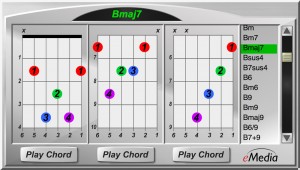
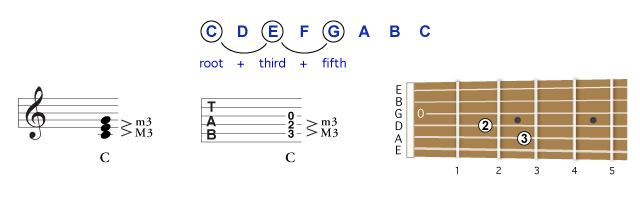
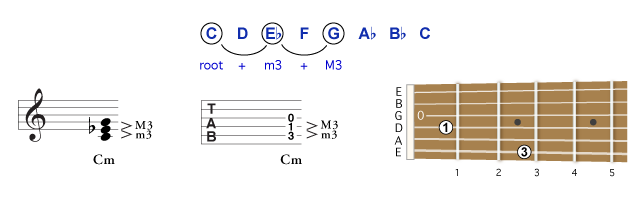

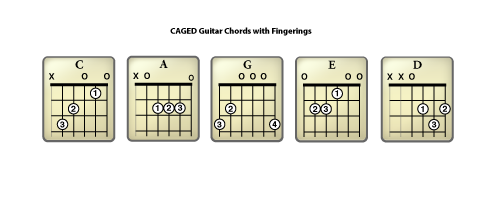
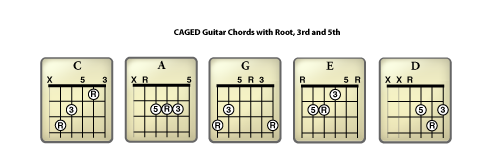

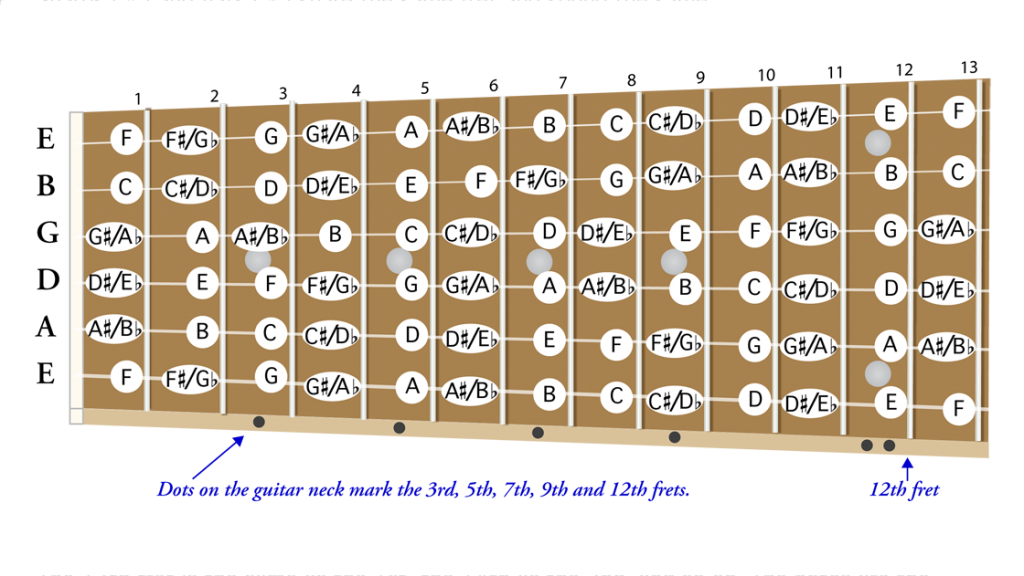
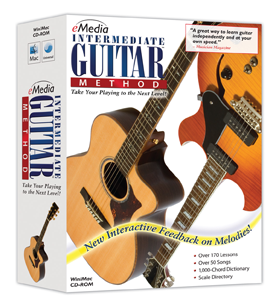 eMedia Intermediate Guitar Method
eMedia Intermediate Guitar Method